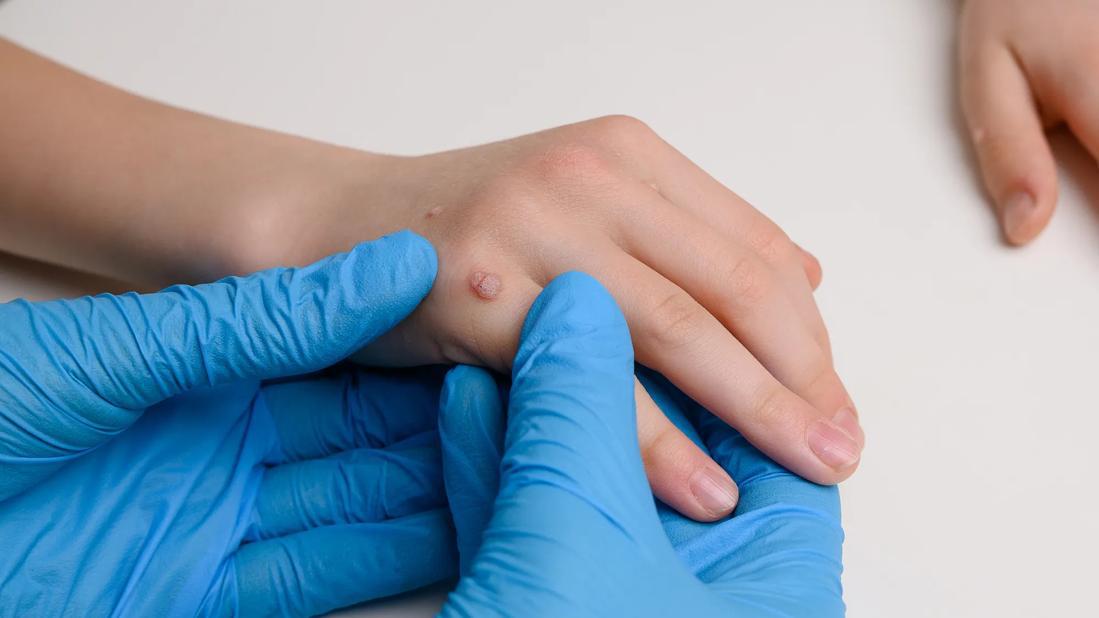Childhood Warts: Why They Happen and What To Do
Some warts will clear up on their own, but others may need home remedies or medical care

Kids and germs. They go together like peanut butter and jelly.
And sometimes, those germs can cause warts.
Why do childhood warts happen? And what should you do about them? Pediatrician Joshua Coleman, MD, explains and offers advice.
Why do kids get warts?
Kids get warts for the same reasons adults do: They come into contact with human papillomavirus (HPV).
Now, let’s back up, because if HPV immediately makes you think of a sexually transmitted infection (STI), that can sound scary.
It doesn’t have to be.
There are more than 100 different kinds of HPV. About 30 of them are transmitted through sexual contact. In those cases, HPV can lead to genital warts and can increase your risk of certain cancers.
But warts on other areas of your kid’s body aren’t STIs. And they aren’t linked to cancer.
They’re caused by different types of HPV. Childhood warts are very common and are most often found on kids’ hands and feet.
The viruses that cause childhood warts can spread through everyday touch. Your child could pick up the virus through skin-to-skin contact (like holding hands) or by touching a surface where the virus is hanging out. Once it enters the skin, it can settle in and cause a wart.
“Kids tend to touch things in public places, and may not always practice the best hand hygiene,” Dr. Coleman notes. “That increases their chances of picking up the virus that causes warts.”
Think, too, about kids who participate in sports like swimming, wrestling, gymnastics, karate or other activities that involve lots of physical contact or use shared equipment or mats. It can be a perfect opportunity for warts to spread.
Childhood warts treatments
Childhood warts often resolve on their own. Others may need home remedies or medical treatment.
“Sometimes, warts are transient,” Dr. Coleman confirms. “That means your body mounts an immune defense and tamps it down.”
If your kid’s wart doesn’t go away on its own, you can try:
- Salicylic acid: That’s the active ingredient in over-the-counter wart-removing kits you’ll find at your local pharmacy. Those use a stronger concentration than you’ll find in acne serums — so don’t waste your skin care products trying to remove your kid’s wart.
- Duct tape: Covering a wart in duct tape sounds weird, but it just might work. Why? One theory is that the chemicals in duct tape might trick your immune system into thinking something’s wrong. So, as your body works to treat the duct tape problem, it effectively speeds up healing the wart.
- Keeping it covered: Whether you’re going the duct tape route or using a regular bandage, keeping the wart covered can help to keep it from spreading. It can also keep your child from touching it or being self-conscious about it.
What shouldn’t you do?
“Don’t try cutting them off. Don’t try sanding them down or picking at them,” Dr. Coleman warns. “That doesn’t seem to work, and it can cause worse problems.” Namely — bleeding, spreading and infection.
Preventing warts in kids
You can’t always prevent childhood warts. But these tips can help:
- Practice good hygiene: Encourage your child to wash their hands regularly and wash their feet daily.
- Wear shoes in public places: Wear flip-flops or shower shoes in locker rooms, pools and communal showers to reduce exposure.
- Don’t share personal items: Towels, socks, shoes or razors can spread the virus.
- Keep cuts covered: Open skin makes it easier for the virus to enter.
- Discourage picking at skin or warts: Messing with a wart can spread the virus to other body parts or to other people.
When to see a doctor
If your child has warts affecting their genitals or butt, seek medical care immediately, as that can be a sign of an STI.
For warts in other places, seek medical attention if your child’s wart is:
- Growing or spreading
- Uncomfortable or bothersome
- Not responding to home treatments
Their healthcare provider may recommend prescription topical treatments or office treatments, like cryotherapy (freezing) or laser removal.
Childhood warts are common, harmless and usually temporary, even if they’re a little annoying. With time, patience and the right care, most warts go away on their own.